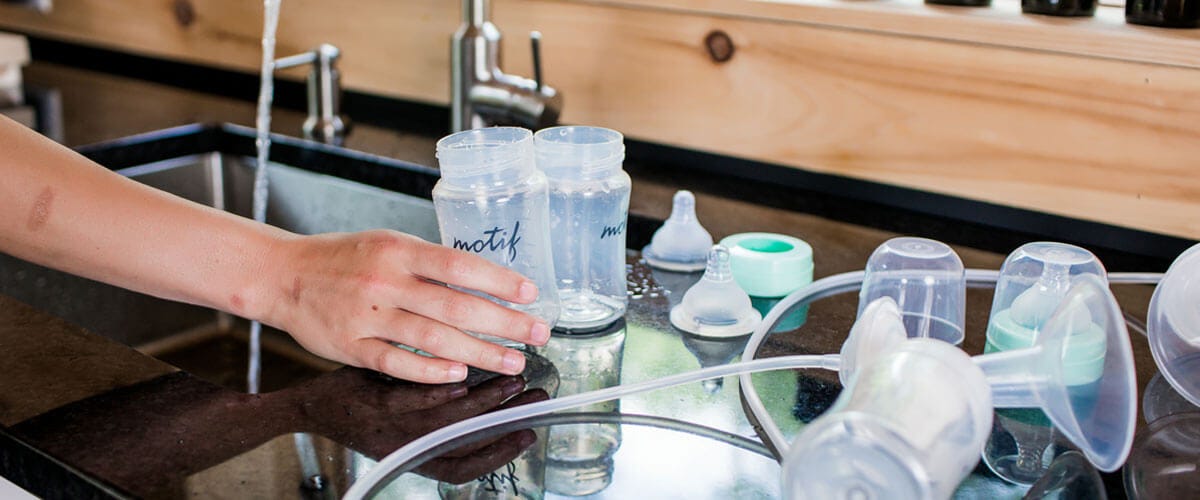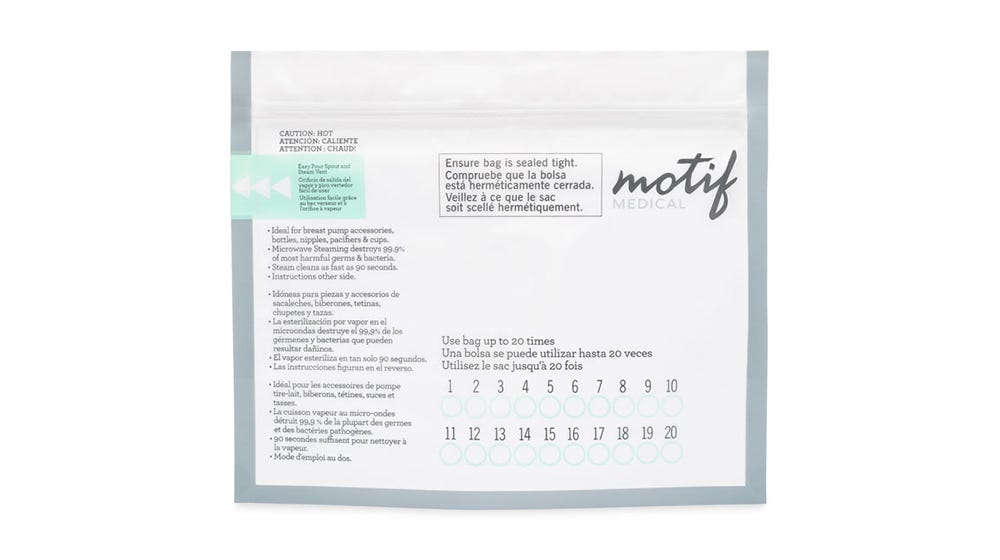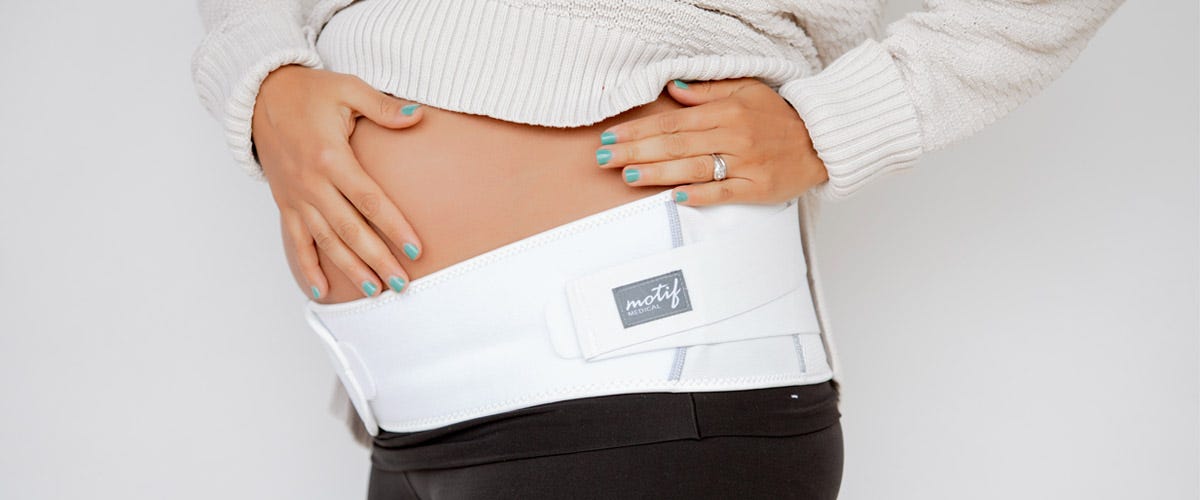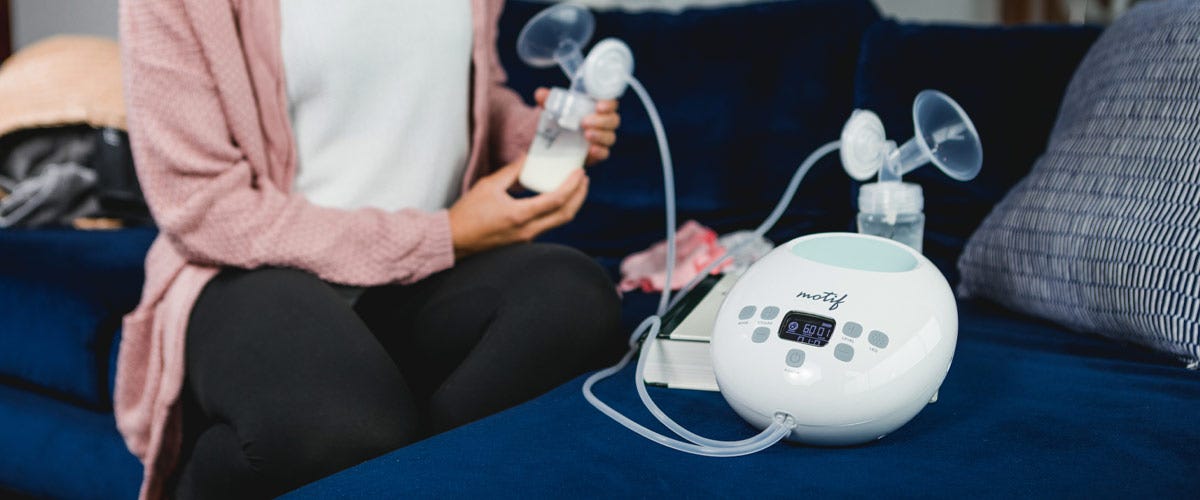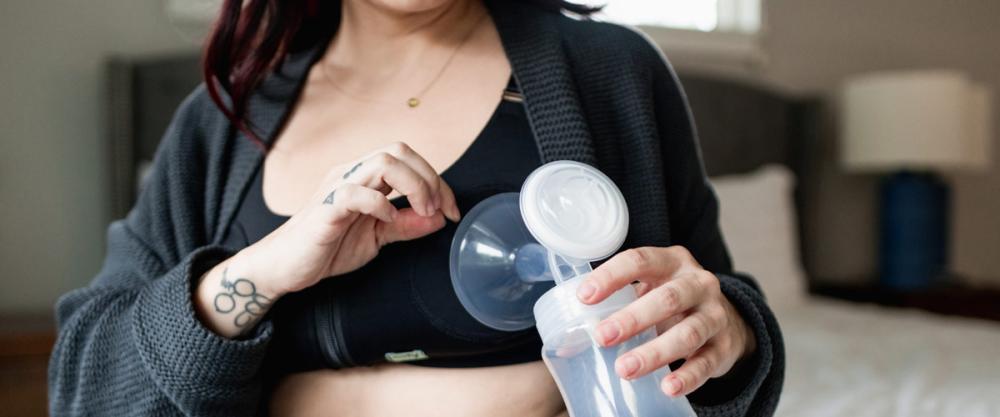This post was written by Motif Medical's Lactation Director Ashley Georgakopoulos, an International Board Certified Lactation Consultant (IBCLC) who specializes in the clinical management of breastfeeding.
Alright Motif Mom, we know you’re busy. Caring for an infant involves chores, laundry, diaper changes, feedings, and much more. Then your time becomes even more limited upon returning to work. However, to keep yourself and baby happy and healthy it's crucial to clean your Motif breast pump parts after every use!
How To Clean Your Breast Pump Parts
First of all, it’s important to clean your breast pump supplies after each use to get rid of germs and bacteria. If breast milk is left in all the pieces and parts, it doesn’t take long for mold and bacteria to take over. Warm milk is the perfect bacteria greenhouse.
The next time you pump, that bacteria could contaminate your fresh milk and introduce germs to your baby. Because your baby’s immune system is still developing, this could cause them to get sick. But with regular cleaning, you won't have to worry. Your breast milk will be safe and sanitary for your baby to enjoy.
Keep in mind: It is not recommended to wash and dry Motif Breast Pump parts in the dishwasher. There is no standard temperature for dishwashers and some may warp parts. Parts damaged in the dishwasher are not covered under warranty. You should only clean the breast pump parts. Do not try to clean, microwave, or sanitize the breast pump motor.
- Check your breast pump manual to see if your items can be steamed or boiled.
- Steam them in in the microwave according to the manufacturer's instructions, OR
- Place your breast pump parts in a pot that safe to boil and cover with water. Place a lid on the pot and turn on the heat to bring the water to a boil. Leave them in the boiling water for five minutes.
- Use clean tongs to remove hot items.
- Allow the items to completely air dry.
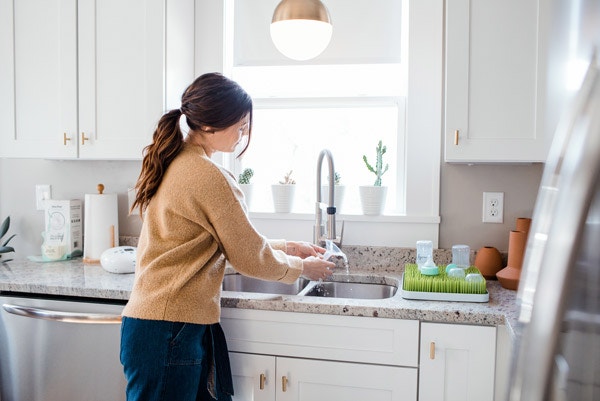

Washing Your Pump Parts
- Thoroughly wash your hands with warm soap and water after breast pumping.
- Disassemble each breast pump part that came into contact with breastmilk, including the: valve, bottle, bottle nipple, breast shield (flange), bottle disk, and bottle cover. Diaphragms do not need to be cleaned unless milk or moisture develops in them. Do not clean the tubing. If moisture or milk becomes present in the tubing, read here.
- Rinse each part (do not rinse the tubing) with cool water to remove milk residue.
- Individually wash each part in the sink with soap and a soft brush or clean washcloth. Or soak each part in warm soapy water for about five minutes and thoroughly rinse them. Or place each part on the top rack of your dishwasher to wash them. NOTE: Not all breast pump parts are dishwasher safe. Refer to your breast pump manual to determine if yours are dishwasher safe or not.
- Dry each part with a soft, clean towel or allow them to air dry completely on a sanitary surface before storing or reassembling your pump. Do not store any damp parts.
- Wipe the main breast pump body with a dry, clean towel after each use.
Sanitizing Your Pump Parts
The CDC recommends sanitizing your breast pump parts at least once a day after washing for extra germ protection.
Breast Pump Tubing
When used correctly breast pump tubing doesn’t come into contact with breast milk and doesn’t need to be cleaned. However, as we all know, things happen. That's why you should:
- Have a spare set of tubing on hand in case it gets soiled or damaged.
- Replace your tubing if it has milk or mold in it. Clean the valves and membranes to see if they caused the leak and see if the tubing was incorrectly attached to the pump.
- Use a damp cloth or disinfectant wipe to clean the outside of the tubing.
- Do not clean the tubing. If moisture or milk becomes present in the tubing, read here.
Breast Pump Cleaning Hacks
If you don't have time to clean your breast pump after every use or during work hours there are a few different ways to stay sanitary:
- Bring an extra milk kit to use a clean set of breast pump parts for every pumping break during the day.
- Place your breast pump parts in the fridge or a cooler with ice in between pumping sessions until you can go home and sanitize them. Keep the items in plastic bags to prevent breast milk from getting on other items.
- Use sanitary wipes or spray that are specific for cleaning breast pump parts in between uses.
- Steam your breast pump parts in the microwave.
Replacement of Breast Pump Parts
Naturally, frequent breast pumping and sanitizing will cause pump parts to become stretched out over time. Your supplies will eventually start to form cracks and crevices that make it easy for residue, bacteria, and mold to build up. Replacing your breast pump parts frequently helps keep your breastmilk clean and ensures you have a spare set on hand or at work. It also helps to extend the amount of time you are able to pump and feed your baby the precious 'liquid gold.' How often you should replace your breast pump supplies will vary depending on how often you pump.
However, a good timeline to shoot for is every 90 days. What many moms don't realize is that your insurance company will often cover replacement parts. Be sure to contact your supplier about their replacement program. These suppliers offer Motif replacement parts through insurance:
References
Centers for Disease Control and Prevention. (2022, July 5). How to keep your breast pump clean. Centers for Disease Control and Prevention. Retrieved August 17, 2022, from https://www.cdc.gov/hygiene/childcare/breast-pump.html

